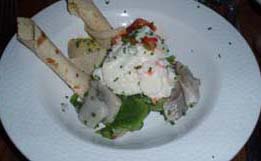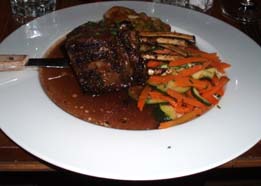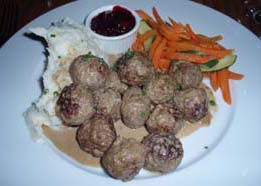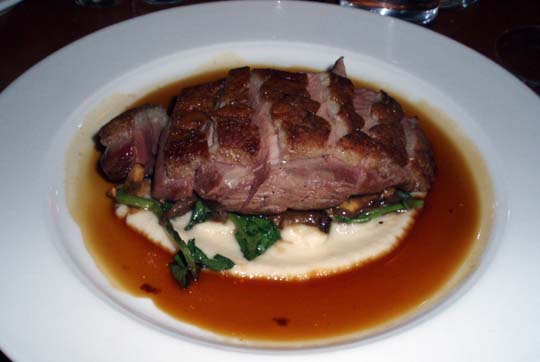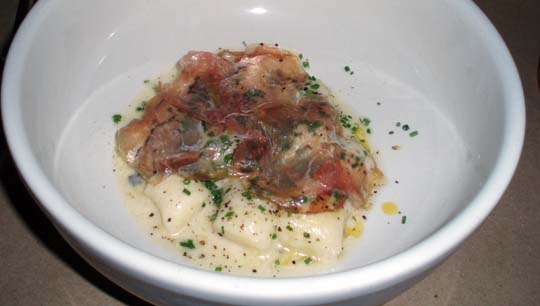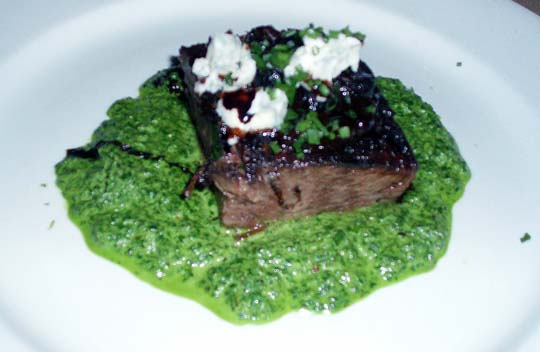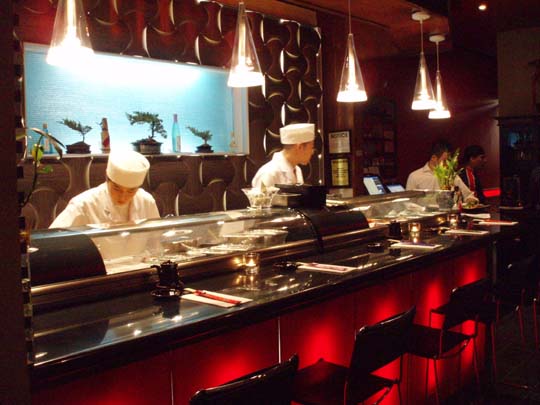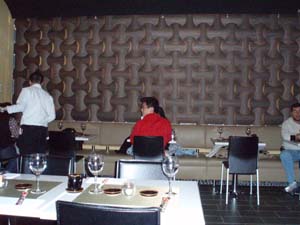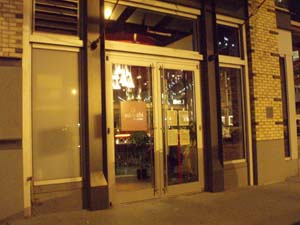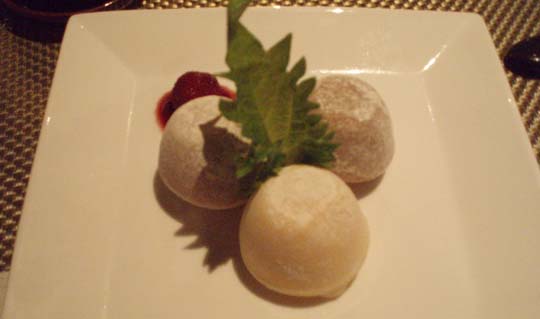Butter
 Sunday, January 28, 2007 at 04:35PM
Sunday, January 28, 2007 at 04:35PM 
Note: Butter “closed for renovations” in late 2013. The closure turned out to be permanent, as such closures often do. The space is now home to the revived Asia de Cuba, whose original incarnation closed in October 2011.
*
I mentioned to a friend that I’d be dining at Butter on Saturday night. She replied, “Butter used to be a huge celeb hotspot about 2 years ago.” We saw no celebrities, but the place was packed. On entering, I was greeted by the same attitude Eric Asimov noted in his one-star review for the Times shortly after Butter opened in 2002:
From the outside, it’s difficult to fathom why Butter, which opened not long ago a few doors down from the Public Theater, requires a pair of grim hosts posted like sentries in a glass-walled vestibule, their arms mentally crossed. As with London beefeaters, I felt compelled on a recent visit to try to make them laugh, but I decided that they must have serious work to do, like fending off people who want to be seated before their full party has arrived.
Butter’s survival shows that a one-star review need not be fatal. Butter is still humming along, despite food that we found quite uneven.
The amuse bouche was a spoonful of undistinguished orzo with truffle oil. The bread service came with a small triangle of butter that looked like it was spiced with chives. I was intrigued, but it turned out to be nothing special. You’d think a restaurant called Butter could find a way to hit a home run with—the butter. For the appetizer, we both started with the foie gras terrine, which was above average.
For the main course, my friend ordered the ribeye steak, a slab of meat the size of Pittsburgh. Alexandra Guarnaschelli, the executive chef, previously cooked at Nick and Stef’s Steakhouse, and at least she can get a steak to the right temperature. But the accompanying bed of mushy kale was practically inedible. It tasted like it was made hours earlier and left sitting under a heat lamp. My pork chop brought even less joy. It was tough and over-cooked, and came with a vegetable medley that had suffered the same sad fate as the kale.
Far too much of the wine list was priced over $50 a bottle. We took our revenge by ordering from near the bottom of the list, a $40 Blaufränkisch (the only Austrian wine on the list). We should do that more often. It was delightful; indeed, better than anything the kitchen sent out.
As we were leaving, we peered into the kitchen, and found it a cluttered mess. “Messy kitchen = mediocre food,” we concluded. I don’t recall the prices of everything we ordered, and the menu on the web is outdated. Appetizers were in the $10–21 range, and entrees $19–35.
The physical space at Butter is visually arresting. The high vaulted ceiling dissipates some of the sound, but it still gets rather noisy when the restaurant fills up. On the lower level, there’s an informal cocktail lounge with a DJ. Halfway through our meal, my friend said, “A hundred people must have gone downstairs since we’ve been sitting here.” But the dining room was full too, which means people must find more merit to the place than we did.
Butter (415 Lafayette Street between Astor Place and E. 4th Street, NoHo)
Food: Fair
Service: Acceptable
Ambiance: Attractive, but noisy
Overall: Don’t bother





